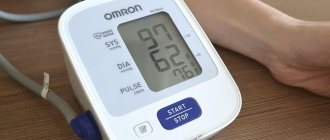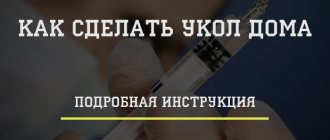Inhalation has rightfully won almost the first place in the treatment of colds at home. Based on practice, only through complex therapy led by this procedure can the patient get back on his feet in the shortest possible time. Modern manufacturers present two devices on the medical equipment market - a steam inhaler and a nebulizer. If the first one does not cope with every inflammation and is not suitable for every age, then the second one is much more improved. Therefore, today we will talk more about how to carry out inhalations with it - a nebulizer.
How to breathe when inhaling: nose or mouth?
Everything here is quite simple, but more than mandatory. Only the correct inhalation-exhalation system will allow the drug to reach the source of inflammation and heal it. The recommendations are as follows:
- For the nose, nasopharynx or paranasal sinuses, it is most effective to use a mask attachment tightly attached to the face or appropriate cannulas. Slow inhalation and exhalation should be done through the nose;
- For the larynx, pharynx and trachea - you should inhale through your mouth and exhale through your nose using a mask-shaped nozzle;
- For the lower level of the respiratory system, it is better to use a nozzle in the form of a mouthpiece; this will allow you not to lose beneficial vapors and get the desired therapeutic effect faster than with a mask.
When performing any of the above procedures, you must hold your breath before exhaling completely, at least for a count of 1-2. For seriously ill patients, try to make breathing calm and even.
Types of inhalers
The inhalation therapy method is based on the penetration of medicinal substances into the respiratory tract in the form of an aerosol, that is, tiny particles suspended in a gaseous medium. If aerosol is inhaled:
- particles larger than 5 microns settle in the oral cavity and upper respiratory tract;
- particles from 1 to 5 microns settle in the lower respiratory tract;
- particles with a diameter less than 1 micron are exhaled back.
Inhalers are divided into types depending on the mechanism of particle formation.
Ultrasonic nebulizers
In ultrasonic inhalers, the drug is atomized due to high-frequency vibration of piezoelectric crystals.
Research shows that ultrasonic inhalations are effective due to the spraying of not only the medicinal substance itself, but also negatively charged particles, which have an additional anti-inflammatory effect.
However, this type of inhaler has a drawback: exposure to ultrasound destroys many medications (for example, antibiotics and phlegm thinners).
Compressor inhalers
A compressor inhaler converts the drug into a fine aerosol using compressed air from a compressor.
The compressor inhaler is considered the most effective for affecting all parts of the respiratory tract. Its great advantage is the creation of an aerosol suspension with a very small particle size of the drug substance. You can use any medications that are intended for inhalation.
Steam inhalers
Based on the evaporation of medicinal substances under the influence of high temperatures.
Flaws:
- you can get a burn to the mucous membrane;
- affect only the upper respiratory tract;
- at high heating temperatures they reduce the biological activity of medicinal substances.
In medical practice, two types of inhalers are usually used: compressor and ultrasonic.
How to perform inhalation correctly
The essence of the nebulizer is to grind the medicine into a “fog” state and then transport it to the source of inflammation. But there are certain subtleties and nuances, without which it is impossible to achieve the desired result.
The sequence of actions is the same for everyone - this is the preparatory stage, the inhalation itself and the final actions. Let's take a closer look at each of them:
Preparation for the procedure is necessary for both the patient and the nebulizer:
- It is important for the patient to wait 1-1.5 hours after eating, since some components of the solution can cause an emetic effect;
- Before use, wash your hands and the device;
- Fill the reservoir with medicine;
- Assemble and check the functionality of the nebulizer;
- Attach the tube with a mask or mouthpiece.
Inhalation:
- During the procedure, it is important to maintain a comfortable position and nothing should interfere with measured deep breathing. Shoulders are straightened, chest is open, clothes are loose. Lying down is only permissible when using a mesh nebulizer;
- As described above, you should breathe evenly and calmly. When using an attachment in the form of a mask, you need to attach it tightly to your face;
- The duration is determined by the drug and the age of the patient. However, it should not exceed the permissible operating time for the device itself - this is especially true for families with more than one child. If you do not take a break between procedures, at least half an hour, then most likely the compressor will not last even several years;
When finished you need to do the following:
- Wash your hands and all components of the inhaler;
- Rest for half an hour in silence.
Duration of inhalation
It is usually recommended to breathe until the aerosol “fog” disappears completely. On average this is about 10 minutes. But there are also age restrictions that cannot be ignored. Only the attending physician can more accurately indicate this parameter, based on the patient’s current symptoms.
For children
In the case of inhalation of children, there is a certain difficulty - little fidgets sometimes behave extremely badly, constantly spinning and twirling. But it is extremely important to irrigate the inflammation site with exactly the amount needed to obtain a therapeutic effect. Let's look at the table with the most common respiratory diseases and inhalation times, according to the child's age:
| Disease | Age | Time |
| Dry and wet cough | Up to 6 l | 1.5 – 2 min |
| 6 – 12 l | 2 – 4 min | |
| More than 12 l | 4 – 6 min | |
| Runny nose | Up to 6 l | 4 – 5 min |
| 6 – 12 l | 5 – 7 min | |
| More than 12 l | 7 – 10 min | |
| Bronchitis and laryngitis | Up to 6 l | 4 – 5 min |
| 6 – 12 l | 5 – 7 min | |
| More than 12 l | About 10 min |
The duration for diseases such as pneumonia, tonsillitis and others similar to them should be determined exclusively with the attending physician.
The problem with inhaling children is that even 2 minutes can seem like an eternity to a child. The same tablet, TV or mother's fairy tales can help you sit through it. And thanks to the love of copying, with the ostentatiously exaggerated breathing of an adult, the little patient can cope with the necessary inhale-exhale technique. If the child is still very small, then you can sit him on your lap and also show him how to breathe.
For adults
Typically, in an inhaler, 5 ml of solution is converted into a vapor state in 5 minutes. Accordingly, you can easily calculate the time of the procedure based on the volume of the drug prescribed in the prescription. To avoid having to breathe longer than prescribed, you need to fill the reservoir with as much medicinal solution as the doctor prescribed. However, in any case, you should not exceed the time threshold of 15 minutes.
How long should an adult or child breathe with an inhaler when coughing?
Inhalations for coughs of various natures are very effective. The drug is sprayed into a fine aerosol and targeted into the affected area of the respiratory tract. In this case, the drug bypasses the intestines and stomach, which allows you to achieve quick results. But any pharmaceuticals require dosed use. And it is very important to know how much to breathe with an inhaler for an adult and a child when coughing:
- procedures with saline solution to thin sputum and moisturize the respiratory tract - adults and adolescents take 3 ml for one procedure and breathe for at least 5 minutes, children are allowed to take up to 2 ml for 2 minutes; As a rule, regularity is twice a day for 5-7 days; if necessary, it is allowed up to 4 times a day for 7 days;
- to treat wet coughs, use Lazolvan or Ambrobene - they are diluted with saline; for babies under 1 year of age, no more than 1 ml up to two times daily for five days; for older children and adults, the dose is increased to 2-3 ml with the same frequency;
- dry cough is eliminated with the help of berodual; adults and children over 12 years of age need 40 drops of the drug for treatment, children under 6 years of age need to halve it to 20 drops, preschool children will need 10 drops; procedures are carried out three times a day for five days;
- for bronchitis cough, inhalations with a solution of furatsilin are effective - adults and adolescents need 4 ml of the prepared mixture; procedures are carried out twice every day for five days.
In medical practice, many medicines are used for coughs of different nature - allergic, asthmatic, bacterial, bronchitis. Always leave the choice of a specific drug to your doctor. He also sets the dosage, duration and timing of inhalation procedures. Self-medication in this case is contraindicated, as it is fraught with serious complications.
Diseases for which inhalations are prescribed
Both colds and bronchopulmonary diseases rarely pass anyone by during the off-season. Another worrying point is that the percentage of colds in children is much higher. Fortunately, parents, while protecting their child, still do not let the disease take its course and begin treatment when the first signs of the disease appear. And they are much easier to treat.
With a runny nose
The following can help relieve sinus congestion:
- Antiallergic;
- antibacterial drugs;
- antiseptics.
Taking deep breaths through the nose distributes the drug evenly throughout the mucous membrane, and this in turn helps clear nasal congestion faster and better.
For sinusitis
Sinusitis in acute or chronic form is an inflammation of the paranasal sinuses. The seriousness of the situation lies in the fact that this disease has a high incidence of complications such as meningitis and other similar diseases. The advent of a nebulizer made it possible to significantly improve the effectiveness of inhalation therapy, since by inhaling steam through the nose, it became much easier for the drug to reach the source of inflammation - the maxillary sinuses.
Typically used for treatment:
- Drugs that can have a vasoconstrictor and drainage effect.
When coughing
When a cough overcomes you, the nebulizer will be effective if you follow the order of use of the drugs:
- Bronchodilators, with a duration of 10-15 minutes;
- After 15 minutes, mucolytics, which help thin the sputum;
- After 30 minutes, antibiotics and anti-inflammatory drugs.
If you need to do inhalations using hormonal drugs, be sure to rinse your mouth.
For bronchitis
Bronchitis is a pathological process in the bronchi area. According to statistics, this is the reason most patients go to the clinic. And nebulizer inhalations have become an inseparable part of complex therapy. Typically used for treatment:
- Anti-inflammatory;
- Decongestants
- Calming;
- Mucus-thinning drugs.
!Under no circumstances should oil solutions be poured into the tank, this will clog the bronchi and even the ambulance will be powerless to provide any help to the patient.
For asthma
Asthma is usually attributed to the consequences of untimely treatment of bronchitis. The disease develops due to increased activity of the bronchi, the patient experiences difficulty breathing, shortness of breath, and a feeling of tightness in the chest. But this is where a nebulizer comes to the rescue. The main thing is to choose the right medications and breathe correctly into the mouthpiece. Typically used for treatment:
- Bronchodilators;
- Mucolytics;
- Glucocorticosteroids;
- Cromoglicic acid;
- Antibacterial drugs - in case of any infection.
You should breathe through your mouth through a tube with a mouthpiece.
But if there is a period of exacerbation of the disease and the frequency is at least 2 times a week, the procedure should be abandoned. We will also have to find other treatment options for children under 7 years of age.
At a temperature
It doesn’t matter at all what kind of nebulizer is available. Whether it is a compressor, ultrasonic or mesh nebulizer - the use of this device at temperature is allowed. Only steam inhalations can raise it. The task of the medicinal “fog” is to provide a therapeutic effect exclusively on the site of inflammation.
Using a nebulizer during this period is also acceptable for children, but with extreme caution. When the temperature exceeds 38.5°C, it is better to bring it down first. And the second, but no less important point is that the medicine for the solution and the duration of the procedure during this period should be determined not by personal experience, but by the treating pediatrician.
How long should an adult or child breathe with an inhaler when they have a runny nose?
A runny nose is one of the most common ailments among preschoolers. In children, many vasoconstrictors cause drying of the mucous membrane and an allergic reaction. We have seen from our own experience that it is much more effective to use inhalations. We chose the B.Well WN-114 kids inhaler for a child on the website ingalyator-market.ru/ingalyatory/b-well-wn-114-child-cena - a simple, convenient device for home use. Rules of use:
- procedures with saline solution or mineral water (such as Borjomi or Narzan) are absolutely safe and comfortable - it is allowed to breathe daily at intervals of 4 hours for 5 minutes for children and up to 10 minutes for adults for 5-10 days until the condition improves;
- to alleviate the condition of a runny nose, you can use essential oils (eucalyptus, coniferous plants, sea buckthorn) - the procedure is carried out once a day for 5-10 days; only a steam inhaler with a coarse aerosol is used - small particles can reach the bronchioles and cause oil pneumonia;
- Before inhalation, propolis must be dissolved with saline solution (1:20) - for the procedure, take 3 ml of the prepared solution, fill the inhaler and breathe for 10 minutes for adults, or for children - up to 5 minutes.
For a runny nose, inhalation of decoctions of medicinal herbs - calendula, sage, string, chamomile - is allowed. For newborns and infants, inhalations last no more than 1 minute, since their nasal passages are very narrow and can become clogged with swollen mucus. Inhalations in children, regardless of duration, must be carried out in the presence of adults.
Hygiene procedures
You can spend 30 minutes in silence after the procedure while washing the nebulizer components. In addition, it also needs to be disinfected periodically. Typically, all care rules are specified in the instructions supplied with the device. The device should be washed with warm boiled water and soap and assembled only after all components have completely dried. The device should be disinfected 1-2 times a month, provided that the inhaler is used by one person. If the device is used by other family members, it must be sterilized when moving from one to another. This will protect patients from contact with each other by germs and bacteria. Disinfection at home can be:
- Thermal – boiling the device components for ~ 15 minutes;
- Chemical – treatment with peroxide, alcohol and other similar means.
The drug that is suitable specifically for your inhaler can be found on the pages of the same instructions.
When approaching the disinfection of device components, it is important to treat this not as just another wash, but as the key to effective inhalation.









